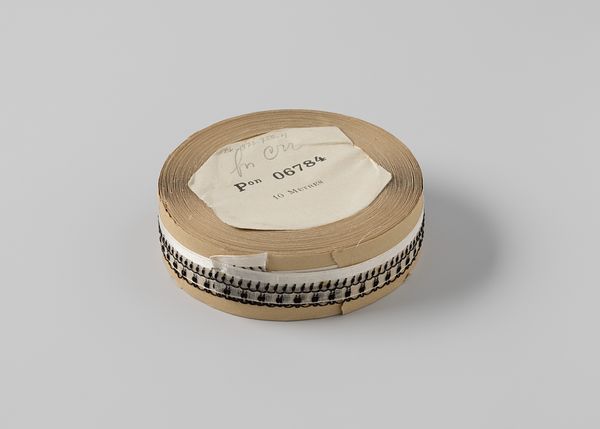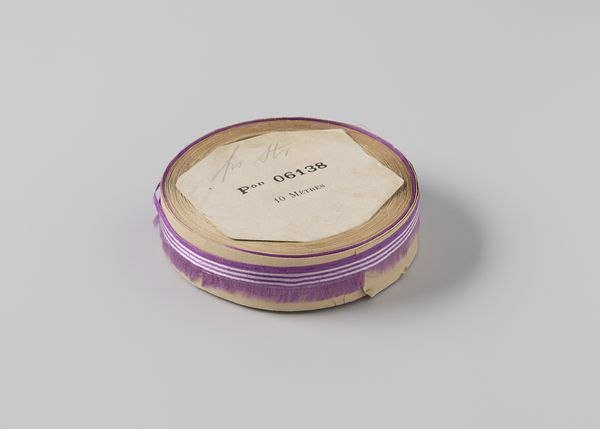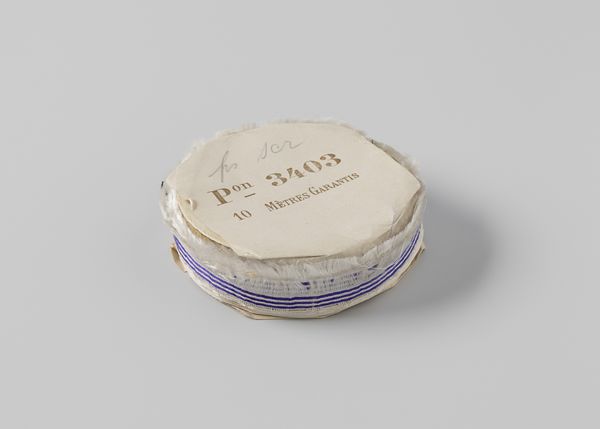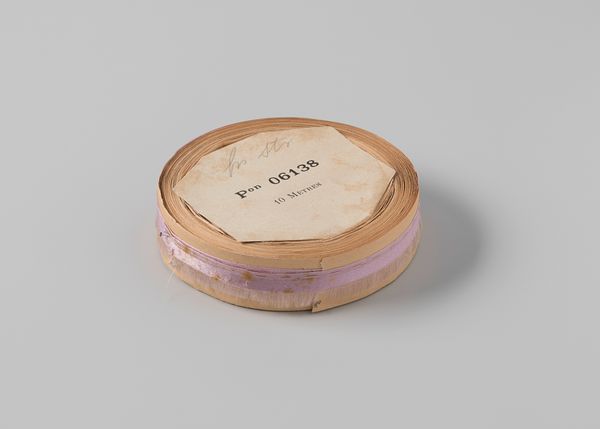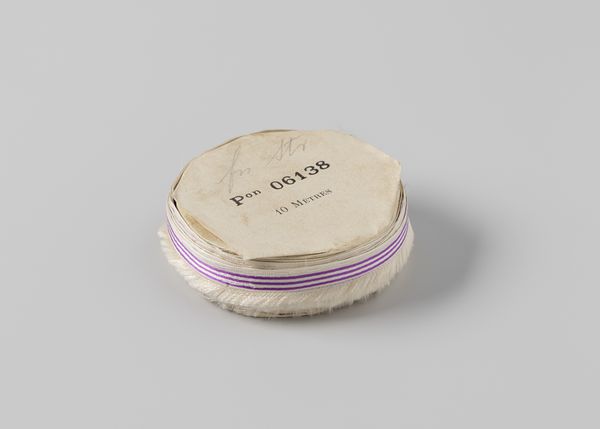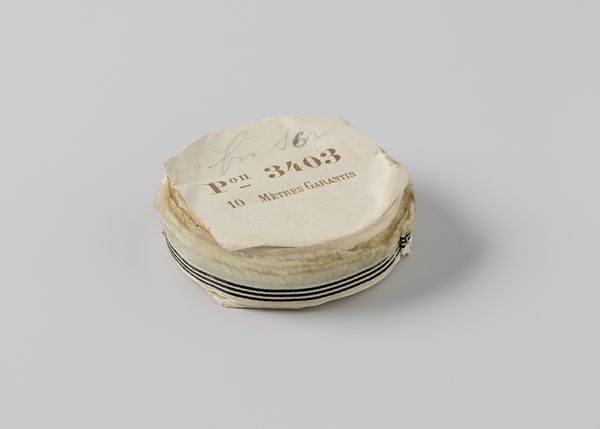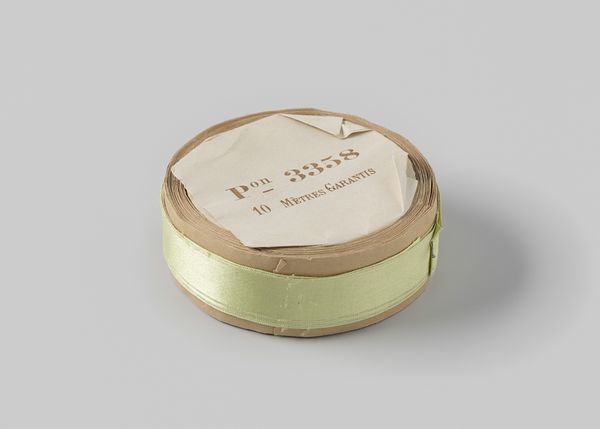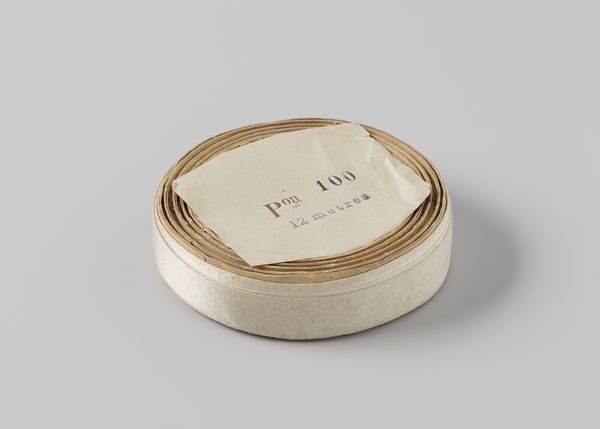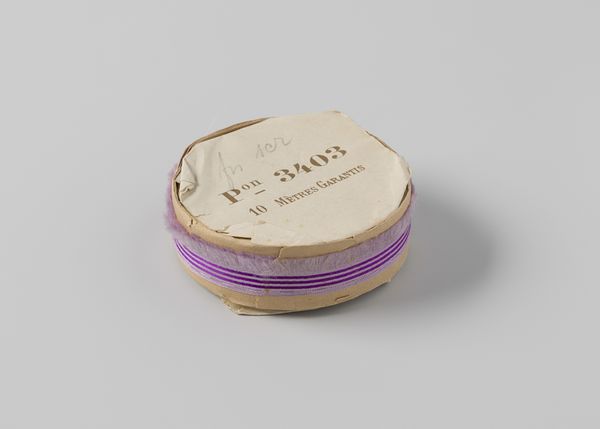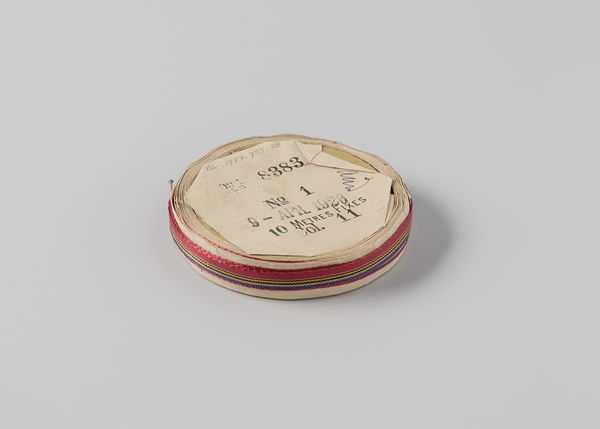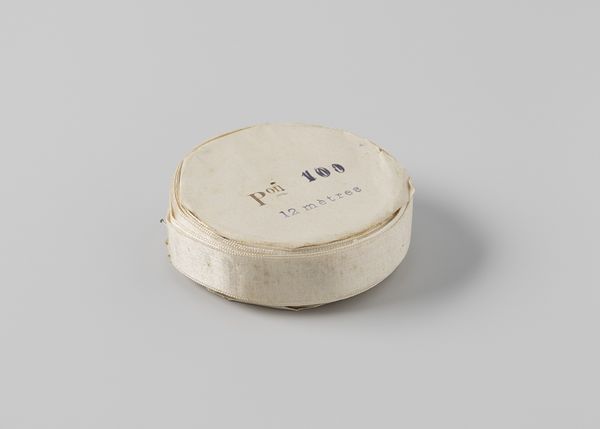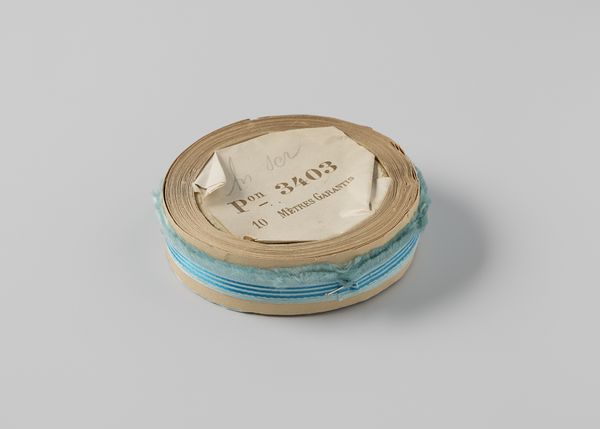
Rol met rood lint met één gerafelde zijde en drie zwarte horizontale strepen c. 1935
0:00
0:00
photography
#
studio photography
#
advertising product shot
#
product studio photography
#
product shot
#
lifestyle product photography
#
retro 'vintage design
#
photography
#
product design photgrpaphy
#
graphic design product photography
#
product photography
#
retail photography
Dimensions: width 1.5 cm, diameter 8.5 cm, height 2.3 cm
Copyright: Rijks Museum: Open Domain
Editor: Here we have a photograph from around 1935 by Gustav Schnitzler, titled "Rol met rood lint met één gerafelde zijde en drie zwarte horizontale strepen" which translates to "Roll with red ribbon with one frayed side and three black horizontal stripes". The clarity of the studio shot makes the materials so tactile, but the subject seems very mundane. What stands out to you? Curator: This isn’t just a photo of ribbon; it's a study of industrial production and consumerism presented through photography. Consider the date – mid-1930s, a time of both economic hardship and burgeoning advertising. What’s being "guaranteed" here? Ten meters? Or something more, like quality and value? How is Schnitzler transforming mundane objects into desirable goods through photographic techniques? Editor: So, you're seeing it less as art and more as a record of…manufacturing? Curator: Precisely. Notice the deliberate way the label is positioned, revealing the guarantee. This highlights the commercial aspects of everyday objects, blurring the lines between art and advertising. This speaks to consumerism and labor embedded within such a seemingly simple photograph. Is Schnitzler celebrating or critiquing the consumer culture? Editor: I guess I was overlooking how calculated the presentation must have been. It's really less about the ribbon itself and more about what it represents: manufacturing, commercialism, and consumption. Curator: Absolutely. Now consider how the “product” ribbon itself, is constructed from fibers dyed to exact shades using machinery; or, how it needs to be packaged for protection and sale. Are we focusing solely on the "art" or should we also focus on the system that enables, mediates and profits from its circulation? Editor: That definitely reframes the whole image for me. Seeing it in terms of labor, materials, and market dynamics gives a lot more depth. Thanks! Curator: Indeed. Viewing through the lens of materials, manufacture, and societal influence gives one much to consider about even mundane artifacts.
Comments
No comments
Be the first to comment and join the conversation on the ultimate creative platform.

